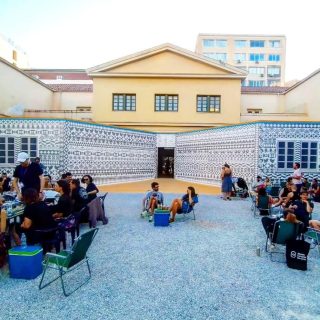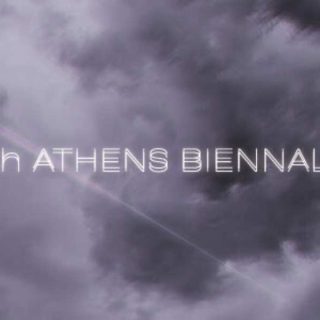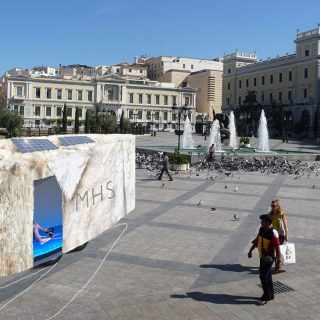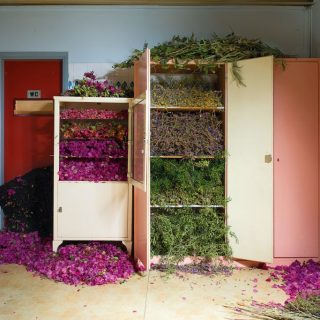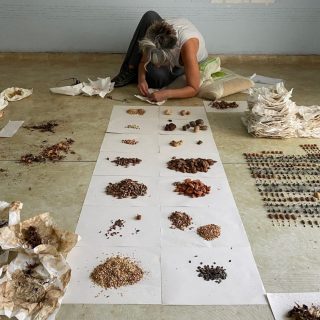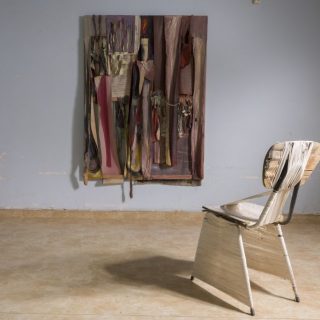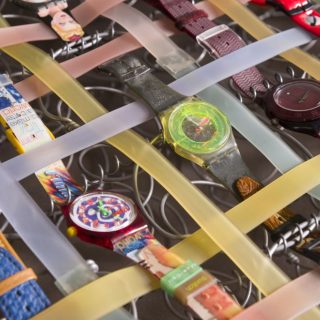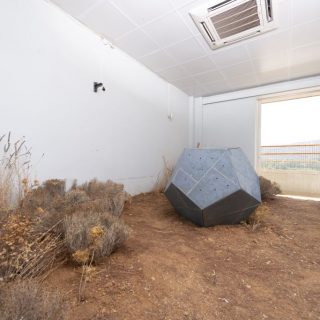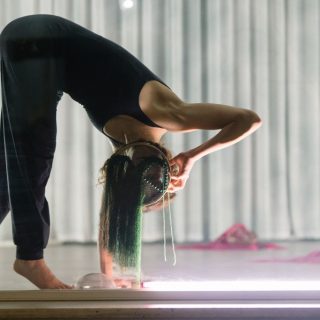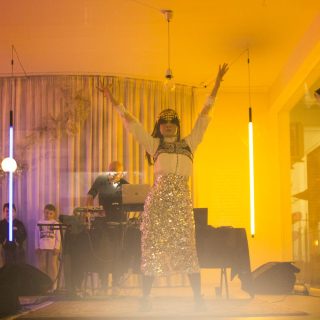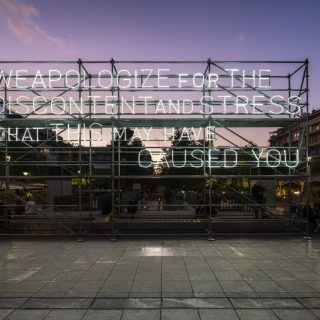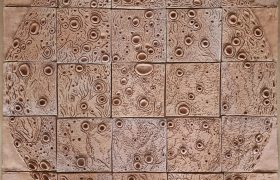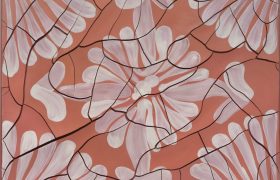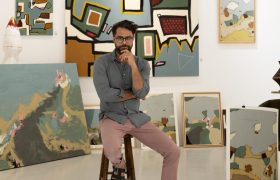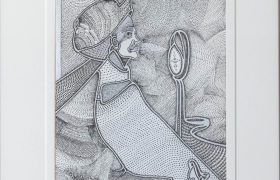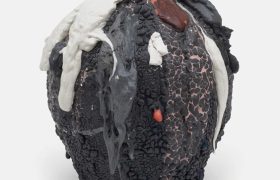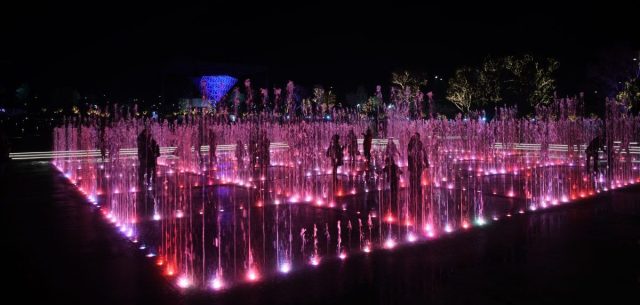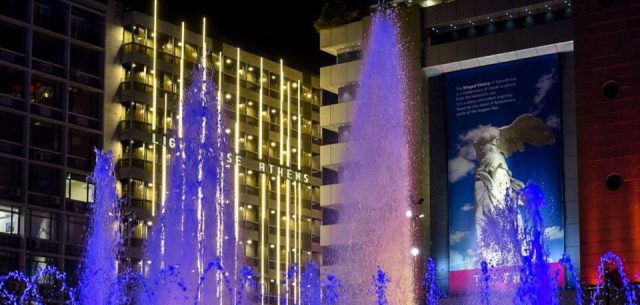Bringing Unloved Athens into Focus Through Art
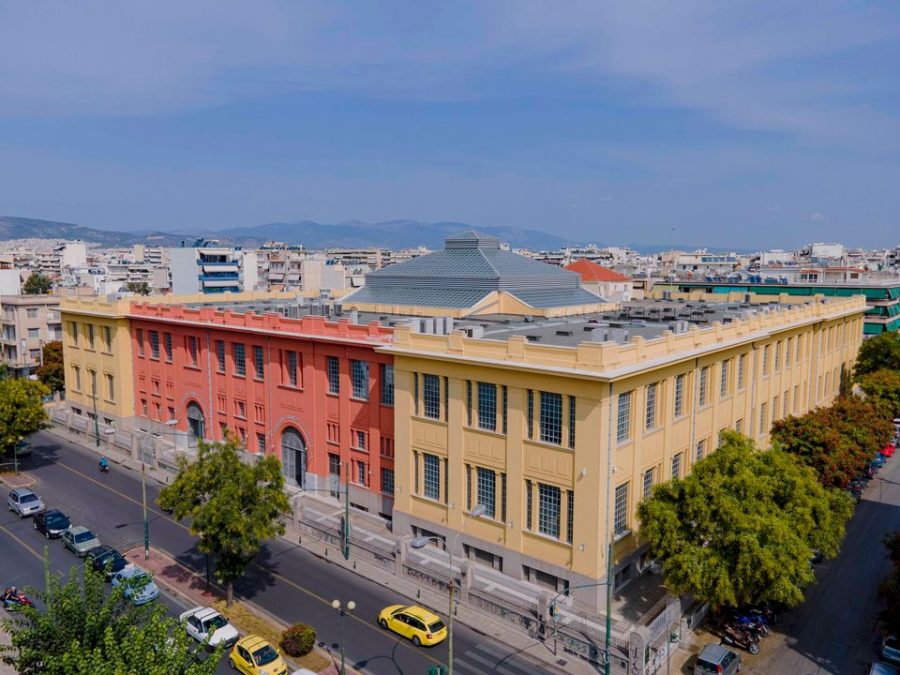
Former Public Tobacco Factory – Hellenic Parliament Library & Printing House | Photograph © George Charisis | Courtesy Hellenic Parliament & NEON
Art historian Els Hanappe investigates the shift in the Athenian art world and the emergence of in situ installations and exhibitions at unloved landmarks, initiating a subtle dialogue between the site, its history and the commissioned works, the play between exterior and interior, that all add up to the city’s narrative.
‘Noi vogliamo distruggere i musei, le biblioteche, le accademie d’ogni specie’, cried Filippo Tommaso Marinetti in his 1909 Futurist Manifesto, or, ‘We want to destroy museums, libraries and academies of every kind’. Henceforth, museums, those cornerstones of 19th century nation-building designed to preserve historical, cultural and scientific collections, have been alternately described as tombs, cemeteries and mausoleums: public depositories for dead objects.
Artists, who for centuries had relied on individual commissions, feared that this centralized authority as arbiter of taste would undermine their ability to create a personal style. In 1863, the competition between the official Paris Salon with its academic painters and the Salon des Refuges for all those who had been left out, was an early sign of this desire or need for nonconformity. Artists wanted to feel connected with life around them, not to be buried inside the walls.
Following World War II with the United States branding its own identity and history less prevalent than Europe, the Abstract Expressionists produced large scale canvases that perfectly adorned the walls of the newly erected progressive museums. A love-hate relationship developed with artists vying for recognition through museum acquisition while simultaneously seeking artistic freedom, a troubling dependency that would open the way for new initiatives and alternative spaces.
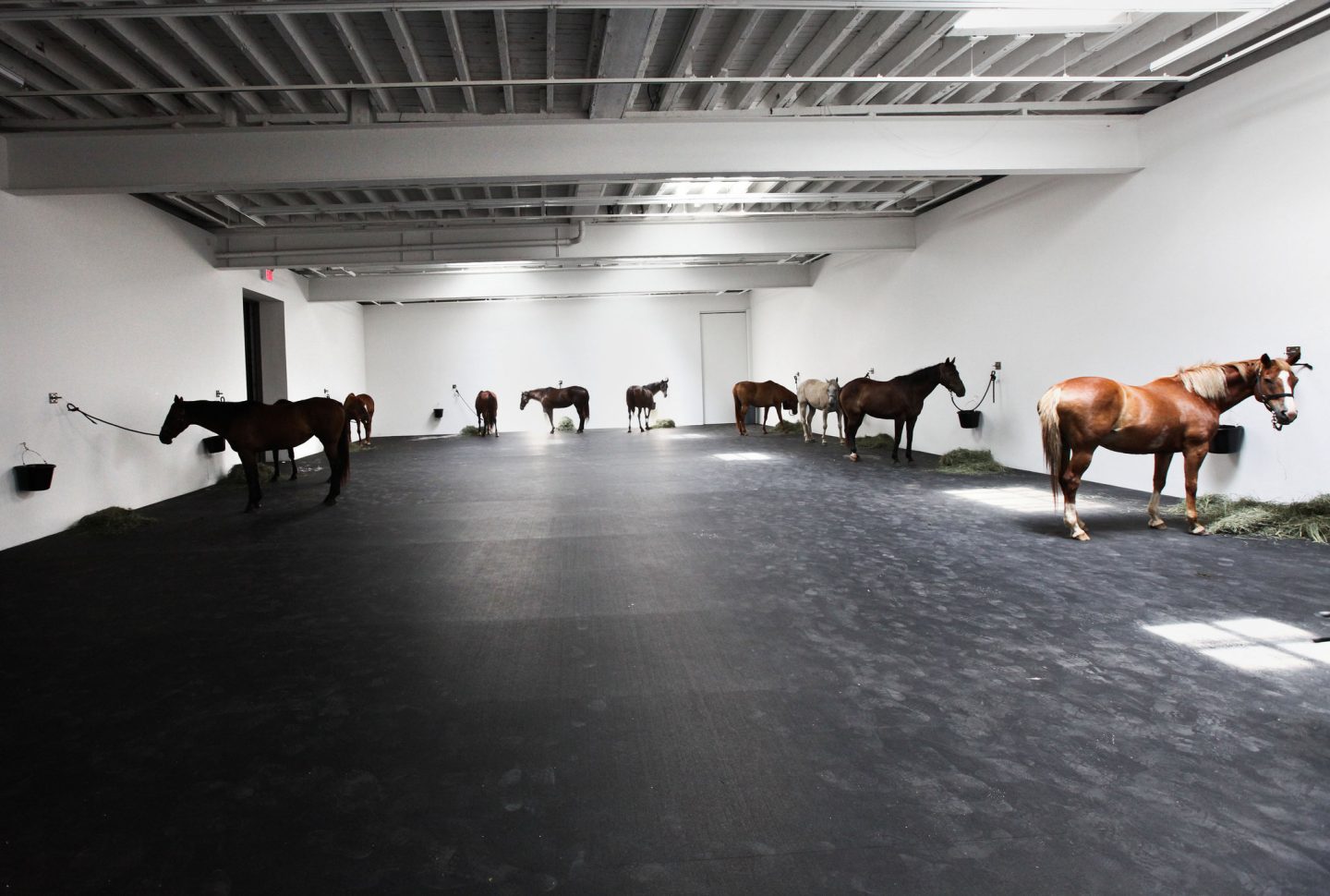
Jannis Kounellis’ 12 horses in Rome
Reactions came about during the 60s and 70s with artists such as Robert Smithson who made on-site sculptures in nature as ‘land art’, or Gordon Matta-Clark who, inspired by the concept of ‘Anarchitecture’ (anarchy + architecture), intervened in deserted or doomed buildings by cutting shapes through them. Commercial galleries followed suit and accommodated requests,including Jannis Kounellis’ wish to position twelve horses around the rectangular space of a Roman gallery, as did exhibition curators, starting with Swiss art historian Harald Szeeman, who first brought outsider art into the institution and thereafter established himself as an independent curator working from his studio home.
The temporary / off-site / in-situ / adhoc / pop-up / independent / alternative exhibition was born.
Museums soon realized that this urge of the artists to connect with life unhindered by commercial purposes and institutional restrictions, forced them to think differently in order to stay relevant. From now on, they reserved space for temporary exhibitions of contemporary art, invited outside curators or artists to intervene in the permanent collections and commissioned in-situ works or installations.
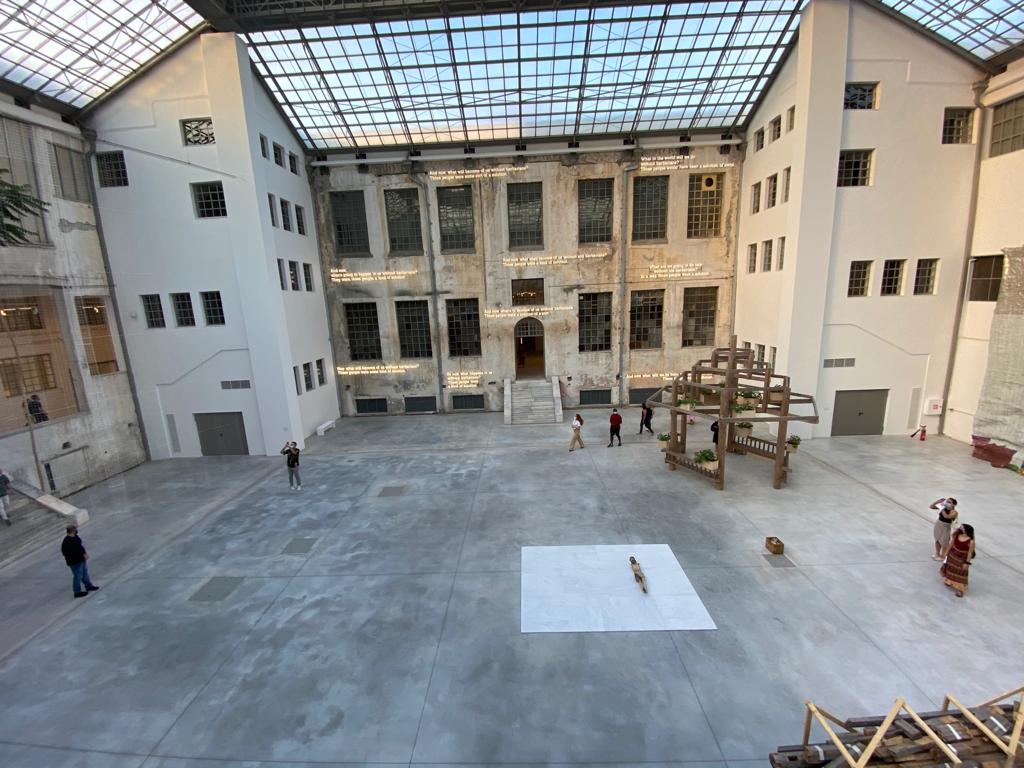
Neon’s Portals at the Public Tobacco Factory on Lenorman
During fall 2021, Athenians were treated to a multitude of contemporary art displays at unconventional and historical venues. NEON, the non-profit organization founded by collector and entrepreneur Dimitris Daskalopoulos, undertook the restoration of the former Public Tobacco Factory and inaugurated the building with an international group show ‘Portals’. Massive in scale and spanning an entire city block, the interior opens up to large, high-ceiling spaces with walls that have been partly smoothed out and partly left with old rough surfaces. The atrium with its glass roofs and the many windows along the sides of the streets offer the visitor breathing space.
This stands in stark contrast to the former department store FOKAS where the Athens Biennale has housed the main location of its multiple-venue ‘Eclipse’ edition. The eerie feel of the 7 floor disused store with its claustrophobic low ceilings, shiny white tiles, elevators and empty display cases, where commercial advertisements that were left behind clash with the abundance of art works and screens, overwhelms the visitor whose flow is dictated by the escalators. At some point I ran into the changing rooms, bedevilled by the surrounding mirrors. Across the street, set in between Stadiou Street and Justice Square and flanked by Arsaki and Santaroza Streets is the former Santaroza Courthouse, named after Santorre, Count of Santarosa, Italian revolutionary and Philhellene. The wide, low and pi-shaped former printing house and courthouse loomed dark as the evening had set in, and the inside with its naked cement and brick walls lit up by neon enhance this impression. The deep urgent voice rising up from the basement and the dark offices lined along the second floor intensify the feeling of a spooky house. As co-founder of the Athens Biennale in 2005 and current artistic director Poka-Yio admits, the abandoned buildings are viewed as empty neutral shells that can be incorporated in the event and that play an active role in the overall installation.
- Navine Khan Drossos’ Nea Xysta at the Santaroza Courthouse
- An artistic representation of what the mobile art installation will look like.
Across Justice Square and situated on Panepistimiou Street is a third venue, the Schliemann-Mela Hall that incorporates commercial, professional and residential spaces. The Hall resembles a typical 19th century luxurious Athenian apartment building with marble steps, a courtyard in the back, and large corridors with doors on both sides that hide deserted and disorderly offices. This image takes us back to ROOMS, an annual project staged by Kappatos Gallery with the participation of multiple curators who each propose one artist who in turn will occupy one hotel room of the St. George Lycabettus Hotel, with the dedicated rooms all situated on one floor. The opening nights would turn into real happenings with visitors enthusiastically dashing in and out of the hotel rooms.
It was in 1983 that collector Dakis Joannou established the Deste Foundation that, during the late 80s and early 90s, would occupy the House of Cyprus, the Cultural and Educational Office of the Cyprus Embassy, for its first high profile exhibitions. Following a major international group show at the School of Fine Arts in 1996, DESTE turned to a permanent venue, first in Neo Psychico and then, on the occasion of the 2004 Olympic Games, to a larger space in Nea Ionia. Both spaces were former factories, redesigned to fulfill their new destinations.
In that same year, in 2004, Locus Athens, a smaller scale enterprise, proclaimed itself a nomadic organization with the aim of introducing contemporary art into public space by taking advantage of the many underused, unknown or unloved landmarks in the city. Co-founder Maria-Thalia Carras recounts, ‘We were interested in navigating the thousand stories to be told and listened to.’ She refers to the ‘genius loci’ of each selected place, its spirit or distinctive atmosphere. Solo and group shows were staged at a private school, a cruise ship departure lounge in Piraeus, at the Tzisdaraki Mosque, the former Correspondents Center, architectural offices, in collaboration with traditional museums or with the many university departments and museums. For Locus Athens, the subtle dialogue between the site, its history and the commissioned works, the play between exterior and interior, was important as a means to add to the stories of a city.
Art critic and curator Kostas Prapoglou, who returned from London to Athens in 2017, talks in similar vein about adding a layer of identity or memory. With a background in archeology and architecture, his interest lies in the reactivation of abandoned buildings by seeking new purposes.
- Dimitra Skandali Small dazzled nothings (2021),
- Eleni Panouklia, Archiving attempts or the first melon I stole (2021)
- Eozen Agοpian, Broken into pieces/piece together (2009-2021)
- Marios Voutsinos
- Lydia Andrioti, In between the day without yesterday and the day after tomorrow (2021)
- Hatziyannaki video still
The first two editions of the Athens Biennale were single location events that from 2011 spread out to ever more adventurous settings such as the Engineers and Public Constructors Pension Fund, the Telecommunications, Telegrams and Post building, and the National Bank of Greece. Poka-Yio stresses the need for constant solutions to identifying spaces large enough to accommodate a major and international cultural event. He talks about waking up the ‘sleeping giants’ in the very center of a metropolis. Having gained experience, he feels that the citizens prefer central, accessible and attractive sites.
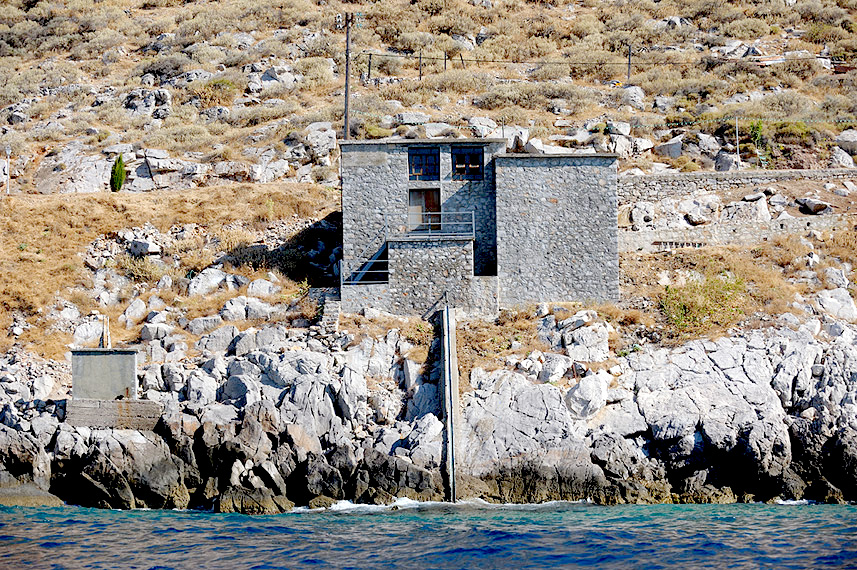
DESTE at the Hydra Slaughterhouse
Such was the success of NEON, which, as a larger and well-funded organization, was in a position to establish collaborations with the renowned Cycladic Museum, and the Archeological Schools of France, Britain and the Unites States and National Observatory of Athens, all of which possess of beautiful extensive gardens. It even secured permits to show contemporary art at such sacred archaeological sites as the Roman Agora, the Kerameikos cemetery and further out, the island of Delos. The Deste Foundation joined up with both the Cycladic and Benaki Museums, and started a satellite space on the island of Hydra called the Hydra Slaughterhouse Project.
Obtaining permissions and permits can be daunting, from negotiating with private owners to navigating the bureaucratic hassles imposed by municipal, regional, state and church authorities. Kostas Prapoglou, who started out independently but has since founded artefact athens, can relate when talking about his decision to install a group show at the Psychiatric Hospital of Dafni, a place burdened by a difficult history, whispered to have housed many an unwanted relative or sane eccentric. His approach is more symbolic, following the ancient holy road or ‘Iera Odos’ from today’s Athens to the ancient site of Eleusis as a dialogue between the past and the present, the center and the suburb. He calls it ‘a journey of the soul’. The green open space surrounding the premises and the opposite monastery may have added to the attraction that convinced Athenians to make the pilgrimage to the far-off hospital grounds.
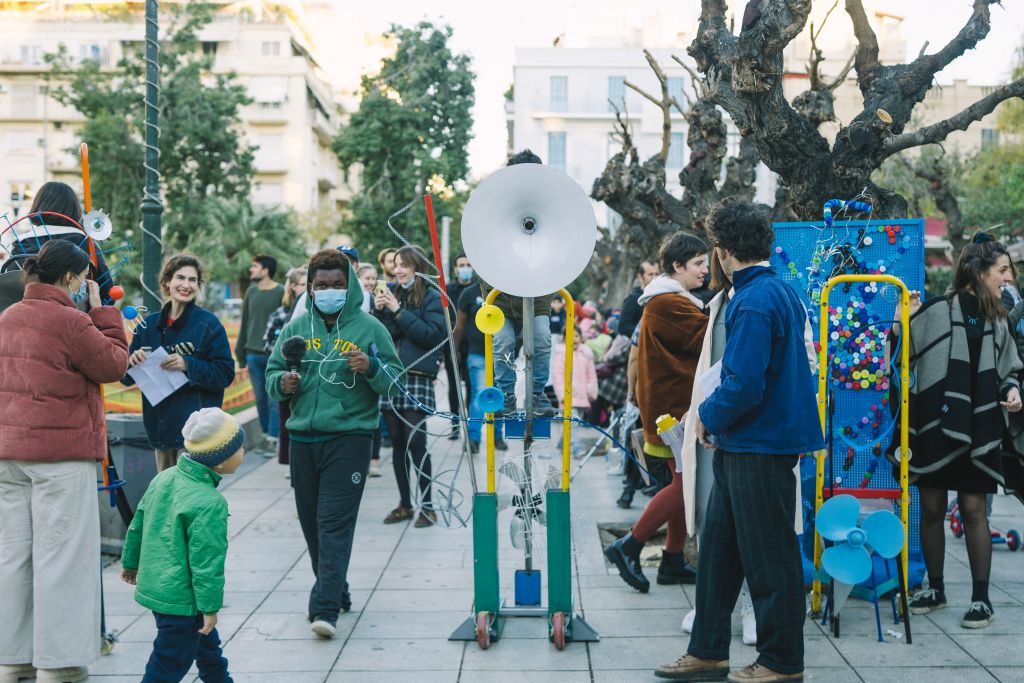
The Victoria Square Project
Leaving enclosed constructions, events can crawl further out through the city, advance into the streets and enter private homes. Maria-Thalia views them as different forms of storytelling. Locus Athens, supported by NEON, tackled the neighborhood of Aigaleo with community projects; since 2017 and as a result of Documenta 14, Victoria Square Project brightens the neighborhood of Victoria, artefact athens attracted renewed attention to the area of Kypseli, and the Athens Biennale grouped its venues around the squares of the Old Parliament, Omonia and Justice.
- Hippodamia Rising_by Melissanthi Spei_2021_Station One AIR_photo by Alexandra Masmanidi
- Performance by Shkodra Elektronike_Opening of We Apologize by Adrian Paci_2021_Photo by Nefeli Papaioannou
- We Apologize, by Adrian Paci, 2021_Commissioned by Victoria Square Project and Counterpoints Arts_Photo_Matteo Natalucci
Together, they constitute worthwhile efforts to reveal the many hidden beauties of the city, provide access behind the closed façades, enliven the city center and attract an audience to unknown destinations. They create opportunities to explore the city from the inside out. At the center of this activity stands contemporary art that has long since been put on the cultural map. Do the venues overshadow the art? Sometimes they do as individual works are subjugated to the effect of the whole as props in a mise en scène. Has it brought art closer to life and to the people? Partly yes, as the audience has become more diverse such as the many hospital patients who were engaged in guided tours or the school children who, for a couple of months, stared at the scribbled classroom walls daily. Will the buildings go back to sleep once the events are over? Opinions vary as some believe that temporality is at the base of all history whereas others feel that the increased visibility will spur new initiatives and activities.

